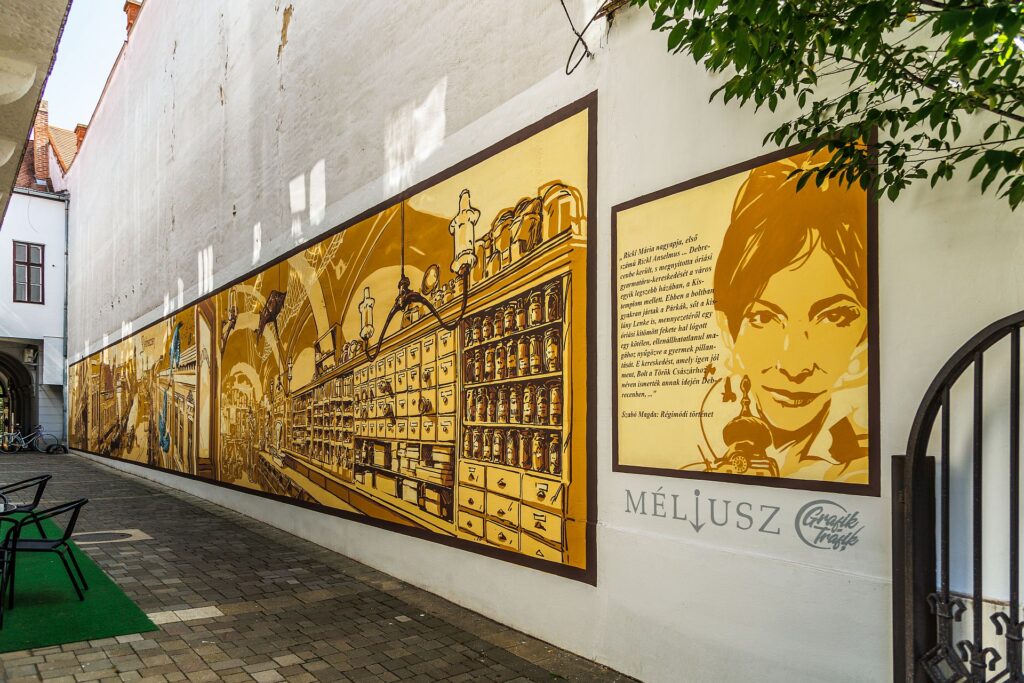On 22 January, we celebrate the Day of Hungarian Culture, in memory of the fact that, according to a manuscript, Ferenc Kölcsey wrote the final text of the Hymn on 22 January 1823. This day is an annual celebration of the rich heritage, traditions, material and spiritual values of Hungarian culture.
Debrecen’s rich cultural heritage rightly elevate the city to one of the citadels of Hungarian culture. The Day of Hungarian Culture is an excellent occasion to take stock of these, from literature to fine arts, from music to street art.
We have selected some of Debrecen’s cultural treasures for you to explore.
Munkácsy trilogy
One of Debrecen’s most popular and valuable cultural treasures is undoubtedly the Munkácsy trilogy on display in the Déri Museum. The three huge canvases by Mihály Munkácsy depicting the Passion of Christ – Christ before Pilate, Ecce homo, Golgotha – dazzle the visitor every time. Art historian Zsuzsanna Bakó says: “The secret of the almost religious radiance of the works is that Munkácsy brought the Savior within touching distance, drawing the audience into the story of Christ’s Passion. He created a modern image of Christ that was tailored to the needs of the modern man seeking ever more sophisticated stimuli. He thus provided both a religious experience and a spiritual delight. In our time, when the technical possibilities of visual art have been greatly expanded, the images still have a fascinating effect on the viewer.” A special opportunity to view the grandiose works is offered by the biblically themed and musical light shows, which offer a new and unusual approach to unlocking the mysteries of the works and helping us to make sense of what we see.
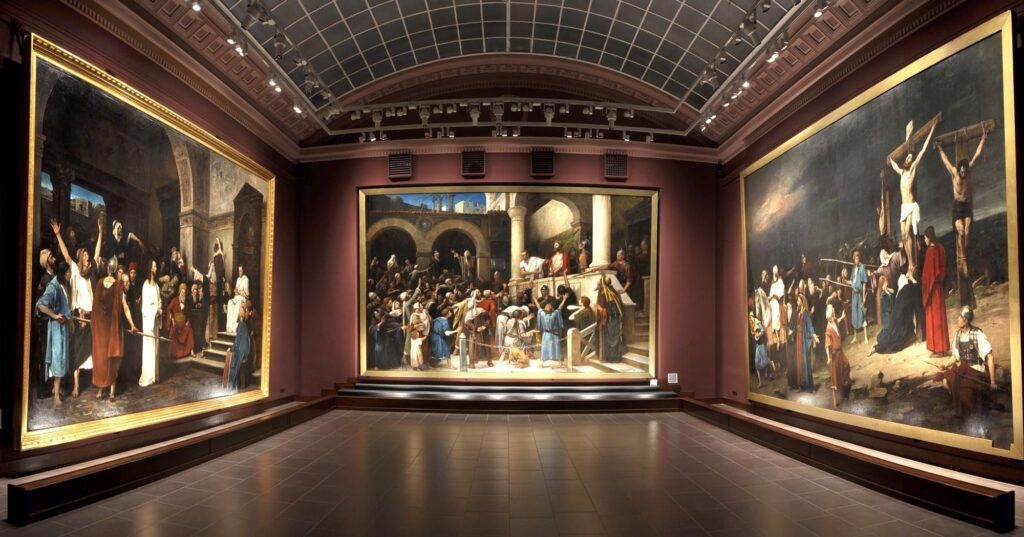
The Great Library of the Reformed College
It is no coincidence that the Great Library of the Reformed College of Debrecen has been ranked among the most beautiful libraries in the world, because the view is always impressive. Hungary’s largest ecclesiastical library houses nearly a million volumes, including dozens of codices and early printed books, as well as many old and rare foreign and Hungarian-language books. Its Bible collection preserves books of the Holy Scriptures in some 250 languages. As part of the college’s museum, the historic Great Library is open to the public, where visitors can admire the impressive shelving and special book collections, as well as learn about the mysteries of bookbinding in temporary exhibitions. The Great Library can be accessed via the centuries-old wooden staircases of the college, and on the way you can admire the spectacular murals depicting the life of the college students and the events of the Hungarian War of Independence in Debrecen.
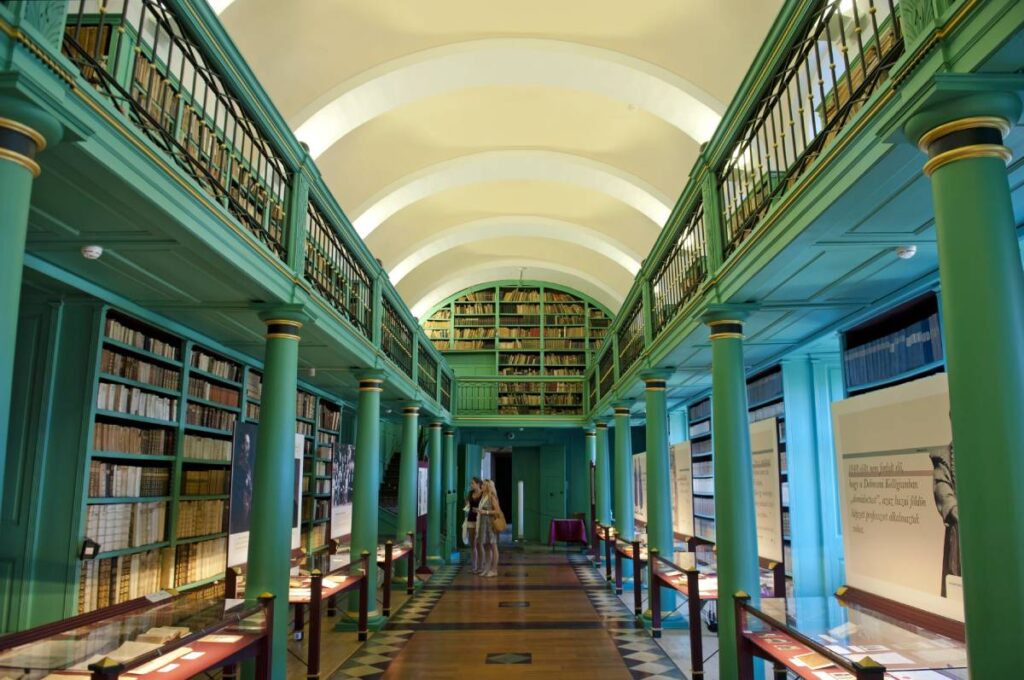
Literary memories
Many prominent figures of Hungarian literature lived and studied in Debrecen, from Csokonai to Ady, from Petőfi to Magda Szabó. Their memory and heritage are preserved in the streets, memorial sites and museums of the city. On a guided literary walk, you can discover where Csokonai was born, where Petőfi lived, where János Arany acted or which café Ady visited. The House of Literature in Debrecen, the Szabó Magda Memorial House and the Reformed College Museum will tell you more about their lives and work. The museum’s exhibitions include Csokonai’s flute, Endre Ady’s lesson book, Magda Szabó’s clothes and jewelry on display, an old schoolroom and one of the world’s most beautiful historic libraries. Two new Kölcsey relics will be added to the Déri Museum for the Day of Hungarian Culture: the Biedermeier escritoire and the penholder Kölcsey used in his study in Szatmárcseke when he wrote the hymn will be on display. The statues of poets and writers such as Mihály Fazekas, Mihály Csokonai Vitéz, Ferenc Kölcsey, Sándor Petőfi, János Arany and Árpád Tóth can be seen on the façade of the Csokonai Theater and in the park of literary statues on Medgyessy Promenade. In the city center you can also take a selfie with statues of Lőrinc Szabó, Endre Ady and Magda Szabó.
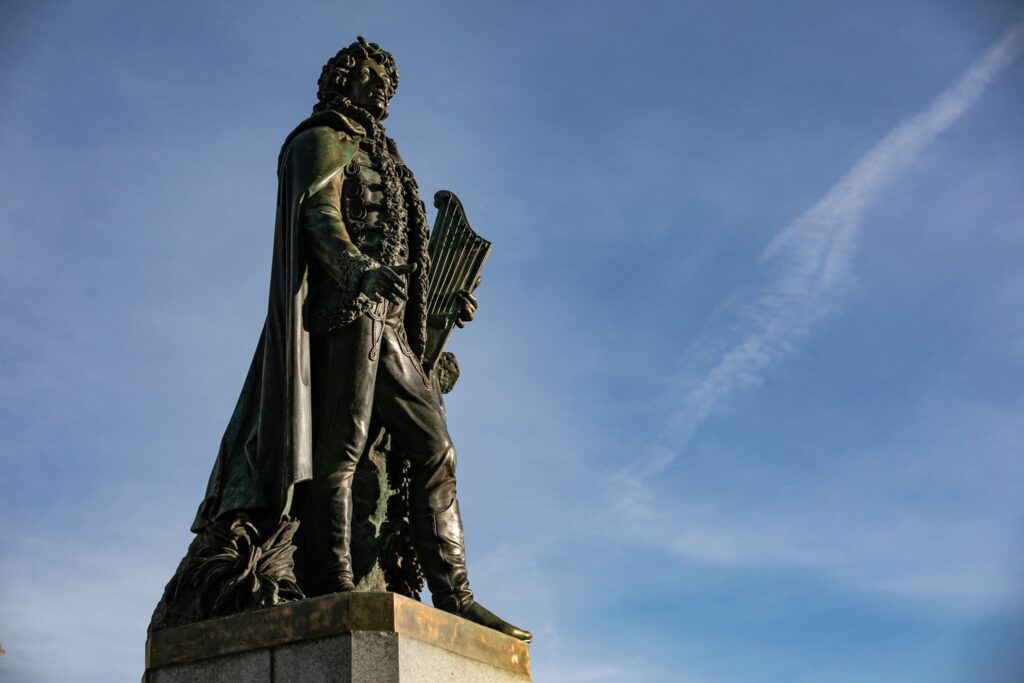
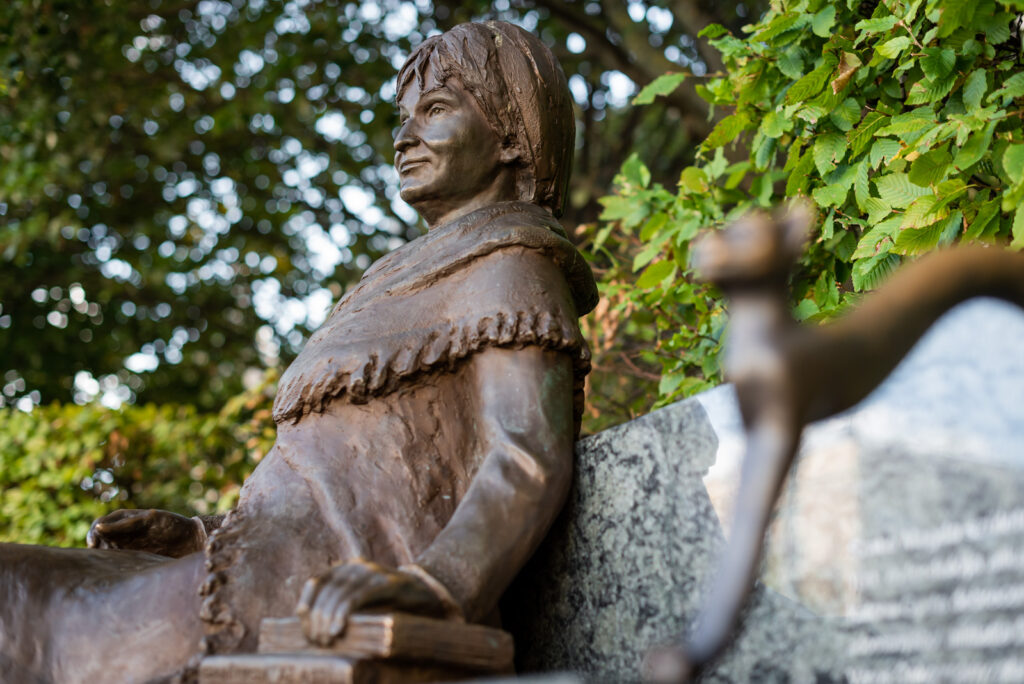
Classical and contemporary art
The Old Picture Gallery of the Déri Museum offers a comprehensive overview of classic works from the 17th and 19th centuries, from Baroque to Classicist painting, to the heyday of historical painting, the most prominent period of Hungarian art. Among the paintings on display are works by such great painters as Mihály Munkácsy, Bertalan Székely, Károly Ferenczy and István Csók. The MODEM Centre for Modern and Contemporary Art, next to the Déri Museum, and the Bényi Gallery in the Kölcsey Center, both feature contemporary art from time to time. The MODEM currently hosts the works of two Debrecen artists, Zoltán Fátyol and István Tamus, as well as works created in the course of various art projects, while the Bényi Gallery is currently home to an exhibition of contemporary paintings by Emese Bács.


Statues of Ferenc Medgyessy
One of the greatest figures of 20th century Hungarian sculpture, the two-time Kossuth Prize winner Ferenc Medgyessy left a rich oeuvre to posterity. In his hometown of Debrecen, a memorial museum named after him preserves his legacy. The museum’s collection includes hundreds of drawings, reliefs, sculptures, statues, archival audio and film recordings, and is complemented by outdoor works that can be viewed on a walk around the city. Most of the dozens of Medgyessy’s outdoor works can be found in one place, the romantic Déri Square. Medgyessy’s four allegorical sculptures, symbolizing the museum’s activities – archaeology, science, art and ethnography, stand above the fountain in front of the neo-Baroque building of the Déri Museum. The four sculptures were exhibited at the 1937 World Exhibition in Paris, where the jury awarded them the Grand Prix, as a sign of the universal value they had created in Hungarian sculpture.

Theater
The theater in Debrecen has a history going back hundreds of years. After temporary theatrical venues, the city’s first stone theatrer opened on 7 October 1865. Writer Mór Jókai himself wrote a poem for the opening, and the opening performance was József Katona’s drama Bánk bán, starring Jókai’s wife Róza Laborfalvi. In the theater, which took the name of Debrecen-born poet Mihály Csokonai Vitéz in 1915, such legendary Hungarian actors as Lujza Blaha, Hanna Honthy, Kálmán Latabár, Imre Soós, László Mensáros, László Márkus, Zoltán Latinovits and Géza Hofi have graced the stage. After several years of renovation, the historic theater reopened in autumn 2023. Renovated inside and out, the Csokonai Theater offers classical plays, music and dance performances and contemporary drama. Works by Debrecen artists are also regularly on the program, currently Magda Szabó’s Für Elise and Szilárd Borbély’s Nincstelenek. In addition to the romantic theater building, the modern Csokonai Forum and the Nagyerdei Open-Air Stage, located among the huge oak giants of the Great Forest, offer further theatrical experiences.
In Debrecen, the younger ones can also enjoy theater. The Vojtina Puppet Theater, which started as an ensemble in 1975, celebrated its 30th anniversary as a professional puppet theater in 2023. In addition to performances in the theater, children can join interactive activities, puppet shows and exhibitions.
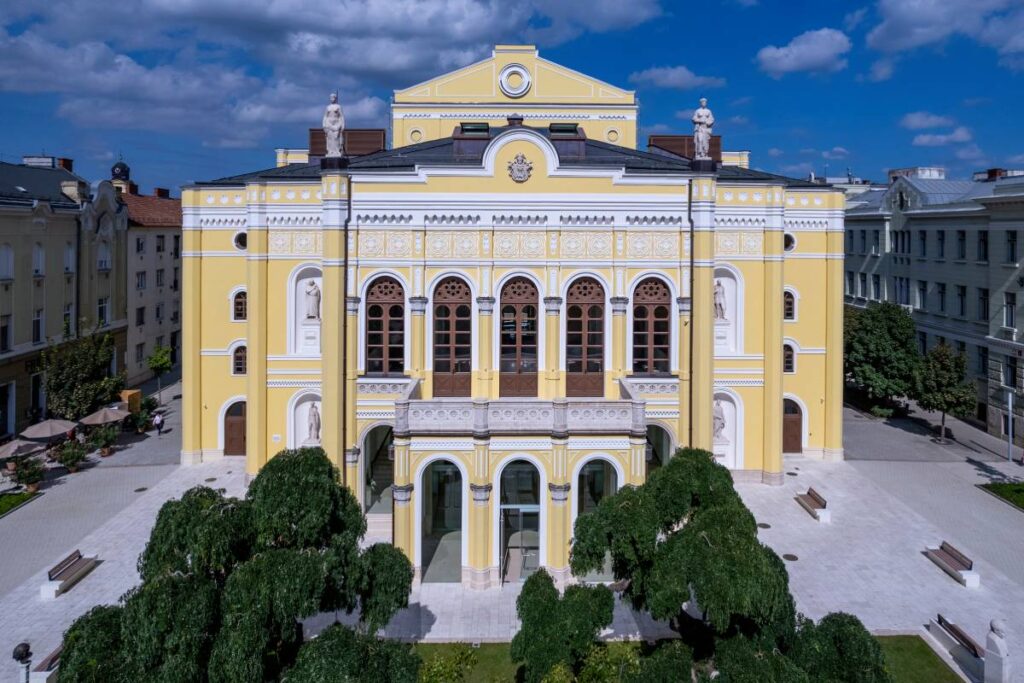
The 100-year-old Kodály Philharmonic Orchestra
The Kodály Philharmonic Orchestra, winner of numerous artistic prizes, has defined Debrecen’s classical music scene since 1923. The centenary symphony orchestra and the Kodály Choir, founded in 1955, give concerts several times a month for classical music lovers. Their repertoire includes classical and contemporary music, including works by Mozart and Bartók, Schubert and Rachmaninov, all performed to a high standard by the ensemble. Both the orchestra and the choir regularly perform with guest artists, and on many occasions, they are joined by other artistic productions. The Kodály Philharmonic’s upcoming concerts include works by Mozart, Beethoven, Prokofiev and Gershwin.

Street art
Debrecen’s historic city center has an amazing amount of cultural and historical sights and attractions on almost every square meter. In addition to the monuments, museums and statues, the city’s rich cultural heritage is now preserved by four spectacular murals. The huge outdoor “canvases” not only decorate the city, but also send an important message to visitors about what Debrecen is. The stunning works are a reminder of Debrecen’s book printing, literature, craft traditions, fine arts, commerce, and architecture, among other things. You can visit the murals on your own during a pleasant street art walk in the city center, and at the end of the walk you can discuss what you have seen at the Aranytölgy Café at the foot of the Reformed Great Church, where a fifth mural is waiting for you as a bonus.
